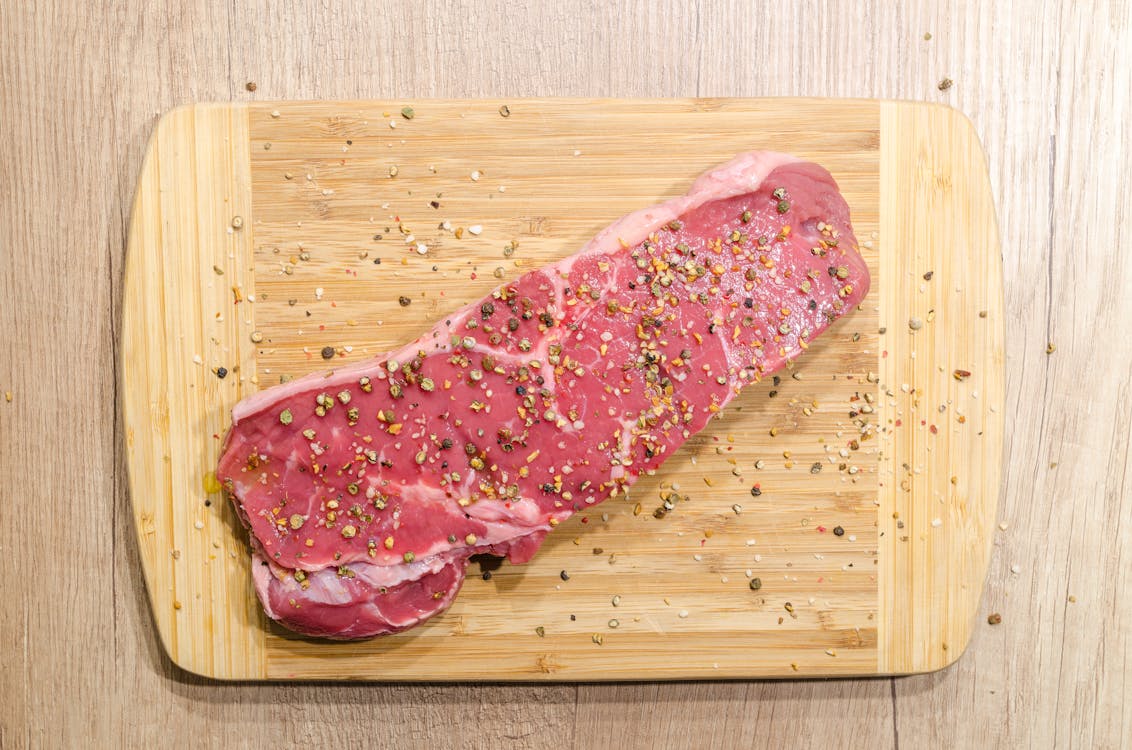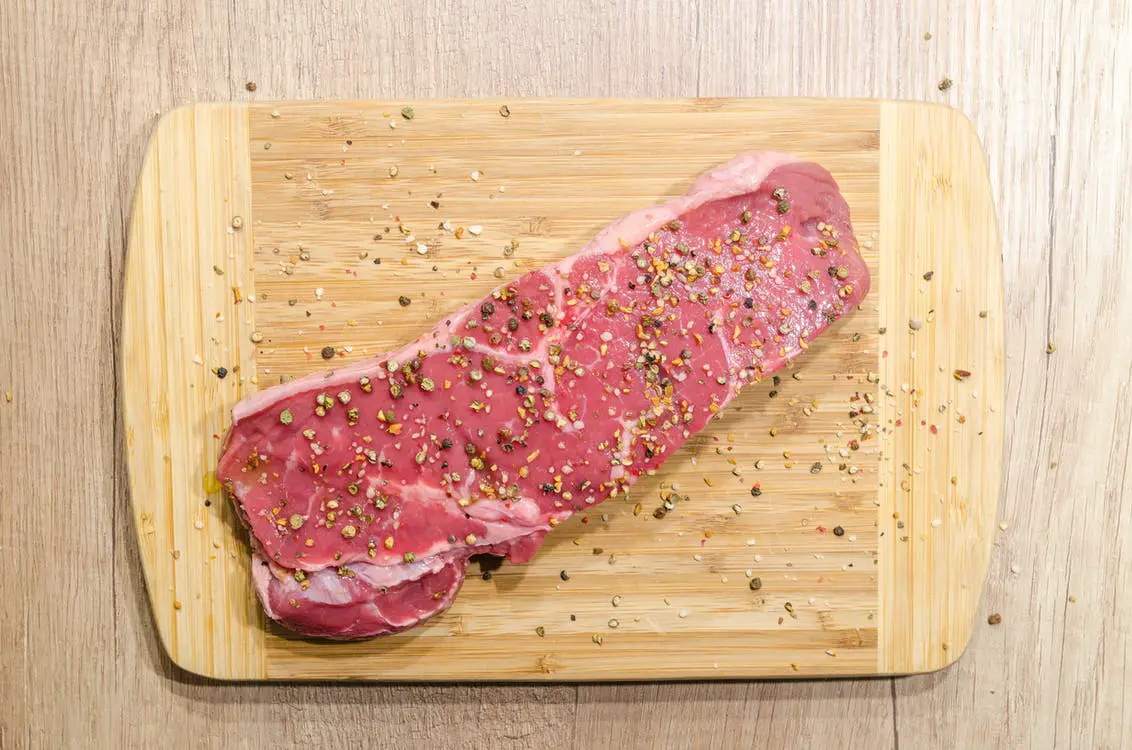How to clean a wooden cutting board
There are a million and one uses for a wooden cutting board, but they all require regular cleaning to ensure they stay sanitary and in good condition. Here's how to clean your wooden cutting board so it stays looking great and functions well.
Check out our wooden cutting board cleaning essentials.

1. Wash your hands thoroughly with soap and water before you start cleaning your cutting board.
One of the most important steps in food safety is to wash your hands thoroughly with soap and water before you start cleaning your cutting board. This will help to remove any bacteria or other contaminants that may be on your hands.
2. Rinse the cutting board off with hot water to get rid of any food debris or particles.
After chopping up all the ingredients for your meal, the last thing you want to do is leave behind bacteria and food particles that could make you sick. That's why it's important to rinse your cutting board off with hot water before you put it away. The hot water will help to dislodge any debris that's stuck on the board, and it will also kill any bacteria that may be present. In addition, hot water is more effective than cold water at removing grease and oil, which can help to keep your cutting board from warping or cracking over time. So next time you're finished cooking, take a few extra minutes to rinse your cutting board off with hot water. It could make all the difference in your health.
3. Pour a small amount of dish detergent on the cutting board and scrub it using a soft-bristled brush.
Cutting boards can also be a source of foodborne illness if they are not properly cleaned. One way to ensure that a cutting board is properly sanitized is to pour a small amount of dish detergent on the board and scrub it using a soft-bristled brush. This will help to remove any bacteria that may be present on the surface of the board. In addition, it is important to rinse the cutting board thoroughly with hot water before using it again. By taking these simple steps, you can help to prevent food poisoning and keep your kitchen safe.
4. Rinse the cutting board off with hot water again.
After scrubbing the cutting board with dish detergent, it is important to rinse it off with hot water again. This will help to remove any residual detergent that may be left on the board. In addition, rinsing the board with hot water will help to kill any remaining bacteria.
5. Dry the cutting board complete with a clean towel or paper towel.
Once the cutting board is clean, it is important to dry it completely with a clean towel or paper towel. This will help to prevent any water spots from forming on the board. In addition, drying the board will help to keep it from warping or cracking over time.
6. Store the cutting board in a cool, dry place.
Once the cutting board is clean and dry, it is important to store it in a cool, dry place. This will help to keep it from warping or cracking. If you have a wooden cutting board, you may want to consider storing it in a drawer or cupboard so that it doesn't come into contact with moisture.
How to clean specific types of wooden cutting board
1. Bamboo cutting board
Bamboo is a popular material for cutting boards since it's durable and sustainable. Plus, it looks great in any kitchen! But how do you clean a bamboo cutting board? First, it's important to avoid using harsh chemicals or detergents, as these can damage the board. Instead, simply rinse the board with warm water and mild soap. If there are any tough stains, you can use a gentle scrub brush to remove them. Once the board is clean, be sure to dry it completely to prevent mold and mildew growth. With proper care, your bamboo cutting board will last for years to come!
There are some important things to remember before using one of these boards in your kitchen. -First and foremost, bamboo is not a sterile surface so it’s important to clean it properly after each use. Sanitizing with hot water and soap should be sufficient, but you can also purchase a commercial sanitizer or use a bleach solution if needed. -Bamboo can also warp if it gets wet often, so make sure to dry it off completely after each use. Place the board on a dish rack or towel to air dry instead of putting it in the sink where moisture will get trapped underneath. -Finally, avoid using harsh chemicals or scrubbing pads that could damage the surface. If you take care of your bamboo cutting board, it will last for years to come!
2. Butcher block cutting board
Over time, wood cutting boards can become stained and cracked, making them difficult to clean and requiring special care. However, with proper cleaning and maintenance, your butcher block cutting board can last for years. To clean a butcher block cutting board, start by scrubbing it with hot water and soap. Then, rinse the board with vinegar or lemon juice to kill any remaining bacteria. If the board is especially dirty, you may need to scrub it with a bristled brush. Finally, dry the board thoroughly before storing it in a cool, dry place. With proper care, your butcher block cutting board will be a staple in your kitchen for years to come.
3. End grain cutting board
End grain cutting boards are beautiful and functional pieces of kitchen equipment. Unlike traditional cutting boards, end grain boards are made up of small pieces of wood glued together in a cross-grain orientation. This design helps to prevent knife marks and extends the lifespan of the board. When it comes time to clean an end grain board, there are a few simple steps to follow. First, scrape away any loose food debris with a blunt knife or spatula. Next, wet a clean sponge or washcloth with warm water and soap, and scrub the surface of the board. Finally, rinse the board with clean water and allow it to air dry. With proper care, an end grain board can last for years.
4. Live edge cutting board
A live edge cutting board is a beautiful and unique addition to any kitchen. But like any cutting board, it needs to be properly cleaned and maintained to prevent the spread of foodborne illness. The first step is to rinse the board with hot water, using a brush or sponge to remove any food particles. Next, use mild dish soap or disinfectant and scrub the board, paying special attention to any crevices or cracks. Once the board is clean, rinse it again with hot water and dry it thoroughly with a clean towel. It's also important to regularly oil the board, using a food-safe oil such as mineral oil or coconut oil. This will help to prevent the wood from drying out and cracking. With proper care, a live edge cutting board can be a beautiful and functional addition to your kitchen for many years to come.
5. Reclaimed wood cutting board
A reclaimed wood cutting board is a beautiful and unique addition to any kitchen. But unlike other cutting boards, it requires a bit of special care to keep it looking its best. Here are a few tips for cleaning your reclaimed wood cutting board:
1. Avoid harsh chemicals. Reclaimed wood is more delicate than other types of wood, so it's important to avoid using harsh chemicals on it. Stick to gentle, natural cleaners like vinegar or lemon juice.
2. Don't soak the board. Soaking the board in water can cause the wood to warp or crack. If you need to clean a particularly dirty area, just spot-clean it with a damp cloth.
3. Be sure to oil the board regularly. Oiling the board helps to protect it from moisture and keeps it looking vibrant. Use a food-safe oil like olive oil or beeswax and apply it evenly over the surface of the board.
By following these simple tips, you can keep your reclaimed wood cutting board looking new for years to come!
Importance of sanitizing the wood cutting board after cleaning
It is important to sanitize the wood cutting board after cleaning because it helps to prevent cross-contamination. If you do not sanitize the wood cutting board, then there is a chance that bacteria can transfer from the cutting board to the food. This is especially important if you are cutting raw meat on the cutting board. You should use a food-safe sanitizer, such as vinegar or bleach, to sanitize the wood cutting board. You should also make sure that you rinse the cutting board off with hot water after sanitizing it.
Whether you’re using a wooden cutting board for food preparation or as a makeshift cheese board, it’s important to clean it regularly. Not only will this keep your board in good condition and prolong its life, but it will also help to keep your kitchen sanitary. Follow these simple steps to clean your wooden cutting board, and you can be sure that it will stay looking great and function well for years to come!

